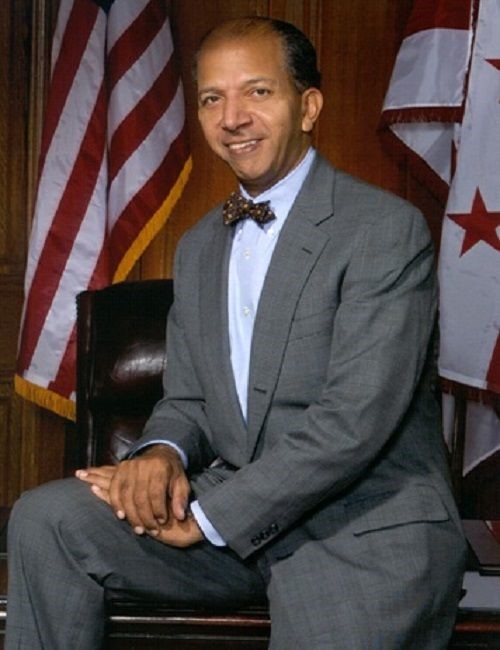
New legislation aims to revitalize America’s downtowns
Vast support rising as more employees work from home

Photo submitted
By Hazel Trice Edney
TriceEdneyWire.com
WASHINGTON, D.C. – Cities across the nation – already experiencing major transformations in restaurant seating policies and crowd limitations – may see even more changes in the aftermath of the COVID-19 pandemic as businesses and organizations allow employees to work from home permanently or at least indefinitely. The absence of employees has left buildings nearly or completely vacant and led to diminished foot traffic for local downtown businesses. Left unchecked, widespread vacancies could lead to long-term economic consequences and even urban decay.
To combat that, and in an effort to revitalize downtown areas, five members of Congress drafted a bill that they say will enhance the quality of urban life.
“As our workplaces change because of the COVID-19 crisis, we will see more unused buildings in our downtowns. Converting these buildings to residential and mixed-use properties will benefit families and our cities,” said Sen. Debbie Stabenow (D-Mich.). “Our bill will help with this transition, support the economic growth of our cities, help small businesses and provide people affordable places to live.”
Stabenow, along with Reps. Gary Peters (D–Mich.), Jimmy Gomez (D-Calif.), Dan Kildee (D-Mich.), and John Larson (D-Conn.) introduced the Revitalizing Downtowns Act. According to the International Downtown Association (IDA) the bill would establish a new federal tax credit to “support the conversion of obsolete and excess office spaces into residential or mixed-use properties.”
In addition, according to IDA, the “proposed office conversion tax credit comes as communities are seeing a rise in remote work and a diminished need for conventional office space in downtown areas – largely as a result of changing work patterns set in motion by the COVID-19 pandemic and evolving technology.”
Experts predict about a quarter of the workforce may tele-work in the near future. “Our best estimate is that 25-30 percent of the workforce will be working-from-home multiple days a week by the end of 2021,” said Kate Lister, president of Global Workplace Analytics, among the nation’s leading authorities on remote work programs and the quantification of their impact. On July 29 last year, Lister testified before the U.S. Senate Committee on the Environment and Public Works that the expansion of tele-work in government post-COVID-19 will likely “reshape the future of where, how, and when people work.”
“Converting obsolete office buildings into residential or mixed-use developments represents a critical opportunity to bolster the economic promise of American cities while expanding affordable housing opportunities, supporting small businesses, and creating more resilient city centers,” said David Downey, president and CEO of the International Downtown Association and member of the Revitalize Our Cities Coalition. “While the economics of conversions is challenging and requires significant private investment, supportive tax policy can create incentives and make it financially feasible. We encourage Congress to pass this crucial legislation quickly.”
According to IDA, the Revitalizing Downtowns Act is modeled after the Historic Tax Credit and would “provide a credit equal to 20 percent of the Qualified Conversion Expenses in converting obsolete office buildings into residential, institutional, hotel, or mixed-use properties. An obsolete office structure is a building that is at least 25 years old, and the bill requires 20 percent of the units in a residential conversion to be dedicated to affordable housing.”
IDA also announced that it was coordinating a growing coalition of 37 national and regional economic development organizations. The Revitalize Our Cities Coalition (ROC) is comprised of organizations across 20 states and the District of Columbia. It includes the International Downtown Association, International Economic Development Council and Accelerator for America.
Regional and local organizations in the coalition represent cities such as Los Angeles; San Francisco; Houston; Dallas; Louisville; Denver; Pittsburgh; Seattle; Minneapolis; Baltimore; Milwaukee; St. Louis; Newark; Birmingham; Little Rock; Detroit; Washington, D.C.; Lancing, Mich., and Cleveland, Akron, Dayton and Cincinnati, Ohio.
Former D.C. Mayor Anthony Williams describes the Revitalizing Downtowns Act as “The key to replacing vacancy with vibrancy, bringing life back to the metropolitan centers that serve as cultural hubs and help fuel the American economy.”
Williams currently serves as the CEO and executive director of the Federal City Council and member of the Revitalize Our Cities Coalition.
He concludes, “Mixed-income housing redevelopments supported by this legislation will provide new opportunities for many American families, generate tax revenue for cities, and stimulate small businesses.”







